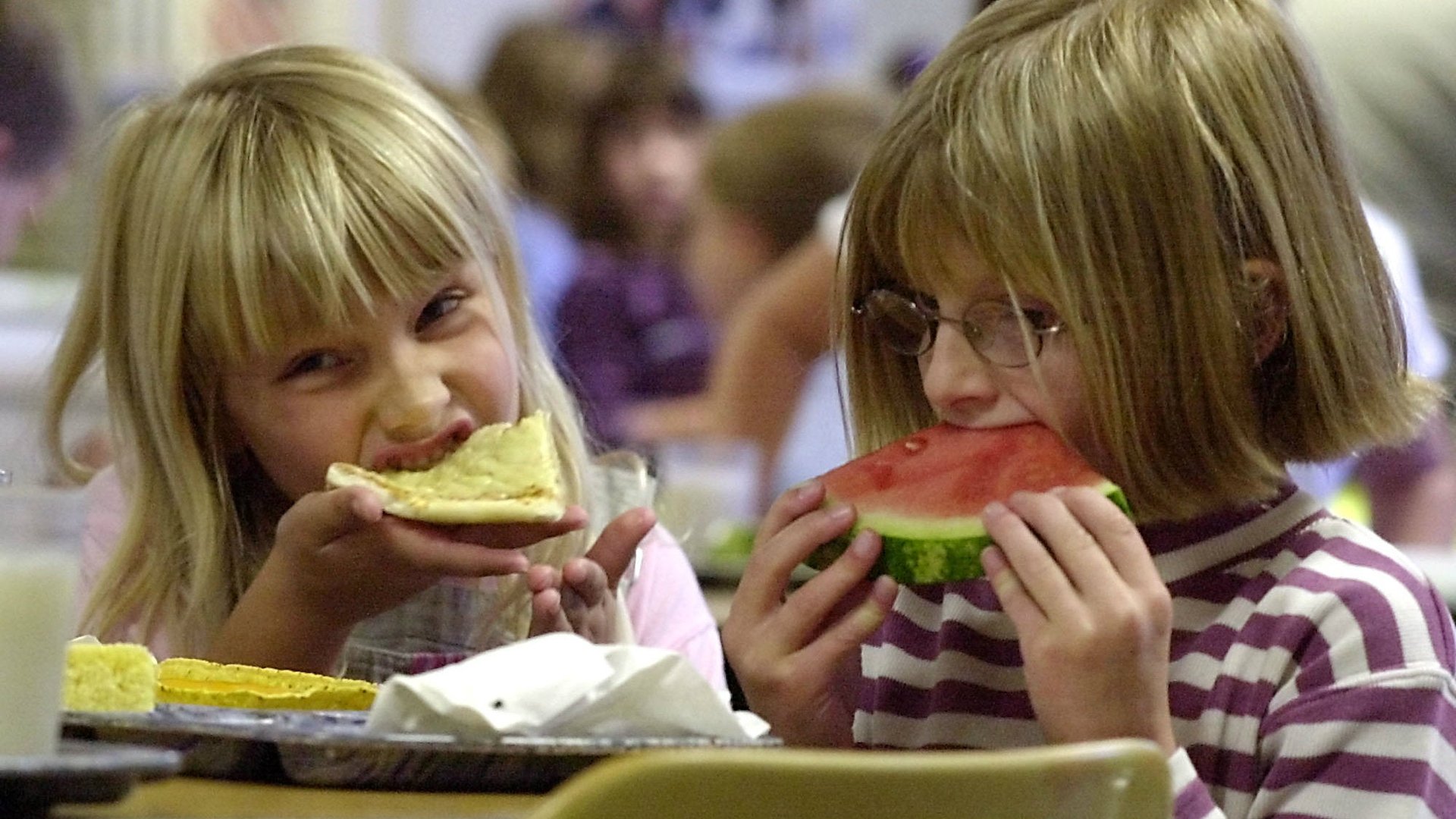Economists are figuring out how to get kids to actually eat those healthy school lunches
Since the introduction of federal rules mandating healthier lunches be served at American schools, students have been taking more fruits and vegetables than they had before—and throwing more away, too.


Since the introduction of federal rules mandating healthier lunches be served at American schools, students have been taking more fruits and vegetables than they had before—and throwing more away, too.
“Average waste increased from one-quarter cup to more than one-third of a cup/tray,” noted the authors of a study published in September in Public Health Reports.
The updated standards, passed by Congress in 2010 and implemented in 2012, call for increased offerings of whole grains, fruits, and vegetables. To get the new rules to work, though, schools have to go further than just changing their menus, says Mary Podrabsky, director of school and community initiatives at the Center for Public Health Nutrition of the University of Washington.
Farm-to-school and nutrition education programs can help, she said, as do the strategies employed by the Cornell University Food and Brand Lab, which is using behavioral economics to help schools all over the country implement low or no-cost ways to get students to eat the healthier food they’re now being served.
The Cornell lab’s Smarter Lunchrooms program focuses on simple, often completely cost-free changes that subtly push kids to make better food choices. For example, the program discovered that giving vegetables fun names (think: “power packed peas” and “X-Ray vision carrots”) can get 20% more kids to choose them. It also has noted that simply swapping kids’ schedules so that they are sent out to play during recess before lunch, instead of after, led to more consumption and less waste of fruits and vegetables in the cafeteria.
Thanks largely to grant money from the US Department of Agriculture, as well as the Cornell program’s own outreach efforts, “there are close to 30,000 schools around the country that have made some kind of Smarter Lunchroom changes,” Adam Brumberg, deputy director of the Food and Brand Lab, told Quartz.
That’s, at least partly, because Brumberg’s lab focuses on getting kids to actually choose healthier foods—and not just put them on their trays out of obligation. A student is more likely to eat the apple if he or she choses it over a pear, for example, instead of just being told to take the apple.
“It’s easy enough to change selection but not actually as easy to change consumption,” Brumberg told Quartz. “One of our mottos is ‘it’s not nutrition until it’s eaten.'” (To make sure kids were actually eating those fruits and healthier foods, says Sudy Majd, a doctoral student at Columbia University who worked at the Cornell lab for more than a year, she physically dug through the garbage to collect, weigh, and compare what was thrown away.)
Many of the Smarter Lunchroom tips will sound familiar to anyone who’s ever noticed the way they’re tempted into buying things at the grocery store or at the movie theater. Just like supermarkets place chocolate bars at the registers to prompt impulse purchases, cafeterias should display fruit by the cash wrap, Majd told Quartz. And just as a movie theater concessioner would ask if you’d like to upgrade your popcorn to a jumbo bucket for a few cents more, cashiers at school cafeterias ought to remind students that fruit comes free with their meal. Big Food uses these tricks because they work: The lab found that just moving and drawing attention to fruit in the lunchroom increased sales by more than 100%.
The economic theory behind such placement is called choice architecture. But really, Majd says, “it’s nudging.”